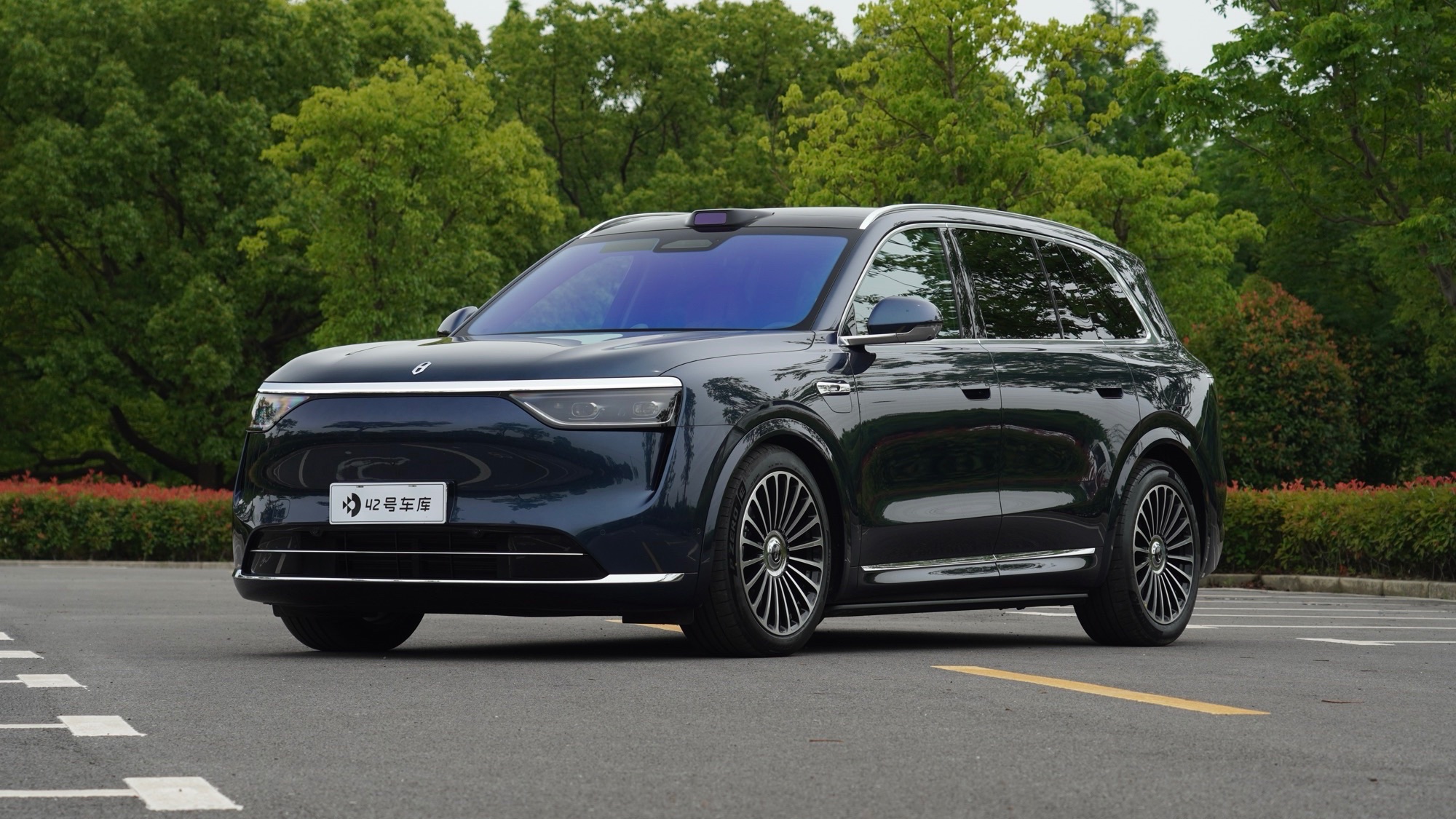What does the concept of 80,000 vehicles entail? It is approximately the total number of new cars sold in Shenzhen over two months. However, with a starting price of 359,800 RMB, the AITO M8 surpassed 80,000 pre-orders within 34 days of its launch. Terminal sales data indicates that just last week, the AITO M8 became the top-selling large SUV in the market, reaching 3,700 units.
Targeted at family car scenarios, with pricing between 350,000 – 450,000 RMB and offering 5/6-seater SUV models, these elements perfectly match the practical needs of Chinese families. It can be said that this market is vast and these cars are among the best-selling.
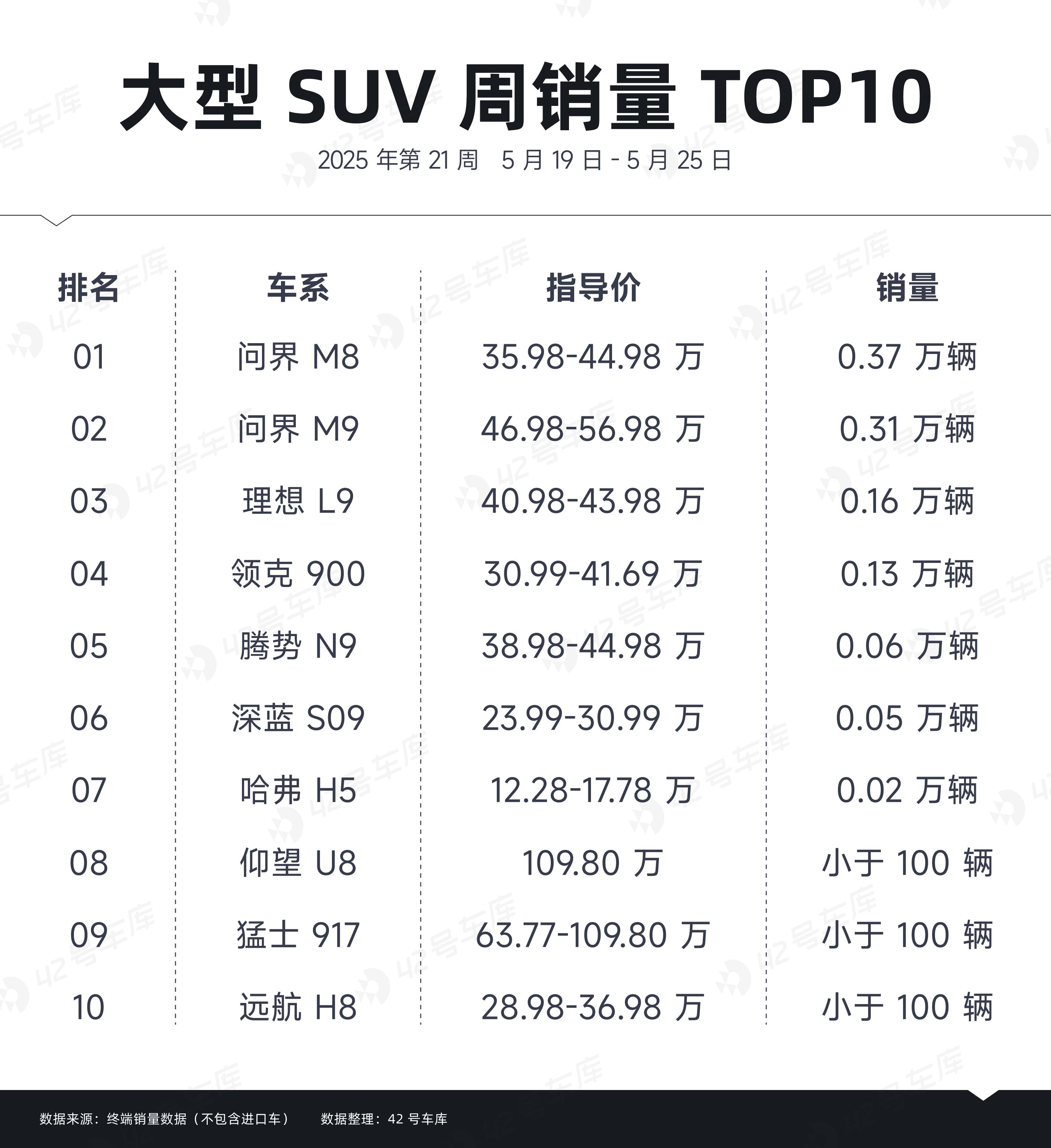
Yet, precisely because of this, many manufacturers have launched family-oriented SUVs in recent years, especially models in the 300,000 to 400,000 RMB price range, resulting in fierce competition where top contenders from all sides battle it out, each being a “hexagonal warrior.”

Before deeply experiencing the AITO M8, our biggest question was this—what did the AITO M8 do right in terms of product and service, and what advantages does it have that are challenging for other brands to reach? Recently, with the arrival of the AITO M8 Ultra version, we performed a full set of fundamental capability tests (range, charging, fuel consumption during charge depletion) and deeply utilized the M8’s intelligent cockpit and assisted driving. It can be said that the AITO M8 delivered excellent results in all these dimensions.
Energy Consumption Test: Highway Fuel Consumption During Charge Depletion 6.69 L
Family outings are all about “stability.” The extended-range powertrain, which can refuel and recharge, is already mature, but users’ needs focus on whether it can run further on electricity alone, whether fuel consumption can be lower, and whether recharging can be as quick as refueling. Thus, our experience first focused on two dimensions: the AITO M8’s highway fuel consumption during charge depletion and its charging capability.
The model we tested was the AITO M8 Extended Range Ultra Six-Seater version, equipped with optional 21-inch multi-spoke wheels and a 53.4 kWh battery pack, with an official CLTC pure electric range of 300 km. With a full tank of fuel, the CLTC total range reached 1,505 km.
According to the 42Test standards, we began the highway fuel consumption test with a 20% charge. We drove a total of 118 km, with an average speed of 105.9 km/h.
After the fuel consumption test, we refueled the AITO M8’s tank to full, adding 7.9 L of fuel. Therefore, our measured fuel consumption during charge depletion for the AITO M8 was 6.69 L/100 km, closely matching the official data of 6.6 L/100 km. Based on the day’s price of 7.32 RMB/L for 95-octane gasoline, if the AITO M8 were to run on the highway at a depleted charge, the cost per kilometer would be approximately 0.49 RMB.For a large SUV like the AITO M8, the battery consumption of 6.69 L / 100 km is excellent. We analyze this to be related to two reasons. Firstly, the mass production thermal efficiency of AITO M8’s 1.5T four-cylinder range extender has reached 44.8%; secondly, the extender adjusts its operational logic based on the environment, speed, and road conditions. For example, driving in the city requires less power, favoring pure electric driving, while at high speeds, the engine operates in an efficient range to generate more electricity, striking a balance among energy consumption, noise, and power.
If you find fuel costs high, charging will certainly meet your needs. We tested the AITO M8’s charging performance from 15% to 100% using a Huawei 600 kW charging pile and recorded effective data from 20% to 100%. It took 38 minutes in total for the AITO M8 to charge from 20% to 100%, with a peak charging power of 206.7 kW, equivalent to a 4C charging capability, and an average charging power of 67.5 kW.
In the 20% – 80% range, the charging speed is faster, taking 17 minutes, with an average charging power of 113 kW. It can be said that AITO M8’s charging performance is very good among plug-in hybrid/range extender vehicles.
During these days of in-depth vehicle experience, we also found that the AITO M8’s energy consumption performance in pure electric mode is equally impressive. In Shanghai’s summer weather conditions, with the air conditioning on, the AITO M8’s average energy consumption can reach 21.4 kWh / 100 km, which is excellent. This means that the large 53.4 kWh battery can allow you to travel over 200 km within the city, which is roughly the commuting distance for many people over a week.
In daily use, another very noticeable feeling is that the AITO M8’s sound insulation is excellent. Hardware-wise, the AITO M8 uses double-layer glass throughout except for the rear window. Additionally, even when the range extender starts, it is almost imperceptible inside the cabin, demonstrating excellent performance.
The chassis hardware of AITO M8 is also excellent, featuring a front double-wishbone and a rear five-link suspension, with double-chamber closed-air springs as standard across all models. The closed dual-chamber air suspension system comes with a compressed air tank, offering better performance than open designs in terms of response speed, stability, and energy consumption. Official data shows its height adjustment can be 30% faster, and energy consumption can be reduced by 50%.
The AITO M8 chassis features 5 height modes with up to 80mm of adjustment capability. The suspension can automatically adjust according to different driving modes and speeds to achieve balance in the aspects of stability and energy consumption.In fact, the core of the AITO M8 chassis is the Huawei Turing platform. On one hand, the integration of the HUAWEI MFSS multi-modal fusion perception system with self-developed technology scans the road 20 times per second. Coupled with the adaptive suspension achieving 100 adjustments per second, it effectively responds to different road conditions.
On the other hand, the AITO M8’s dual-motor four-wheel drive system effectively prevents slipping. Once the vehicle begins to slip, the Turing platform responds in milliseconds, intelligently adjusting the torque. Additionally, the Turing platform has torque vectoring control, providing better handling when cornering at high speeds.
Moreover, the intelligent body cooperative control system can coordinate the car’s driving, braking, steering, and suspension, ultimately making driving easier and more comfortable for passengers.
Specifically, the AITO M8’s experience in sport mode stands out. In sport mode, while ensuring comfort, the vehicle body has stronger support, offering a superior experience on both city roads and highways, making it our favorite subjective driving mode.
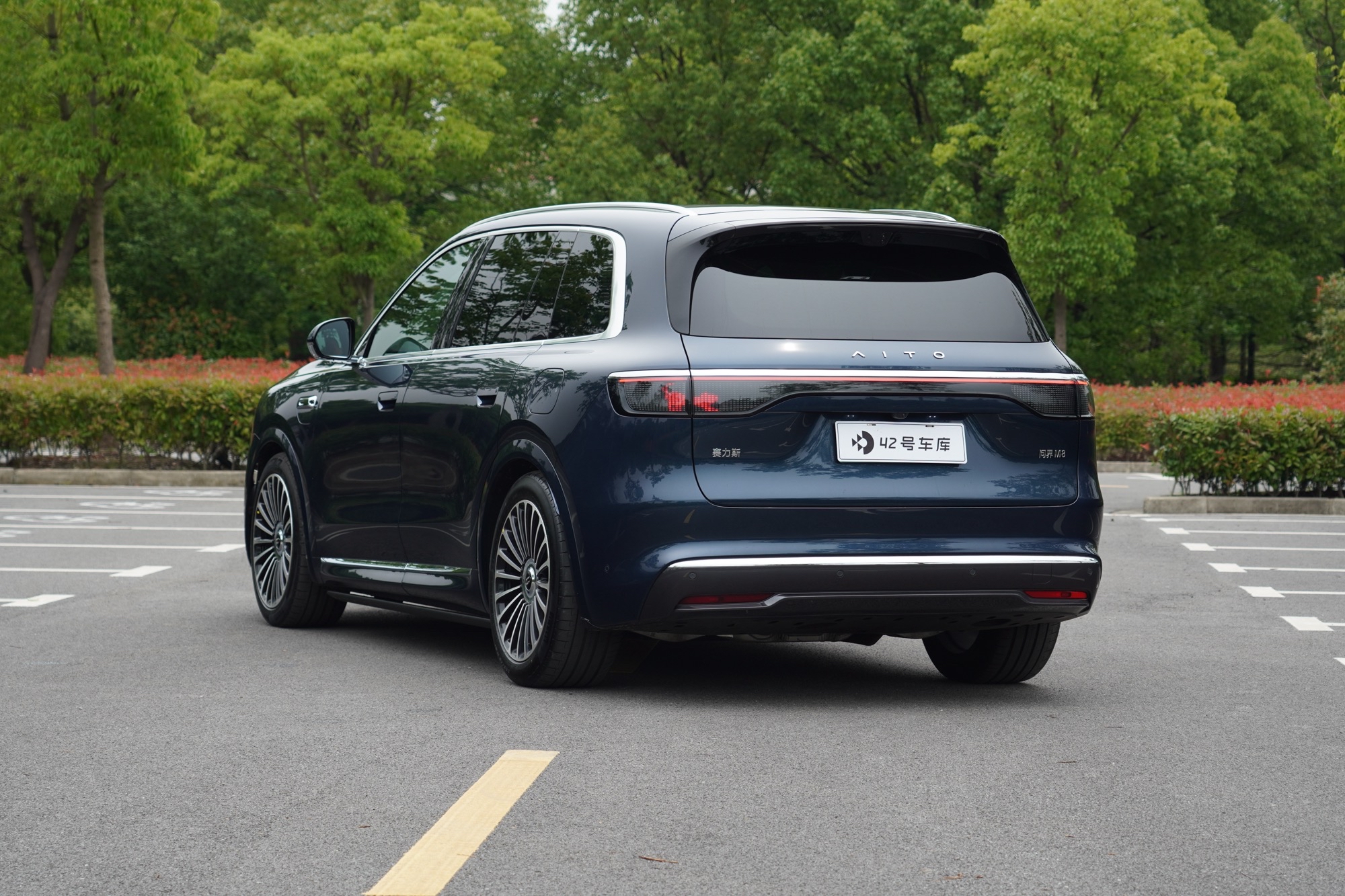
Before purchasing the car, it’s recommended to try the personalized mode, where numerous parameters can be adjusted. You’re likely to find a mode that best suits you and your passengers.
Intelligent Equipment for Families
For families, the AITO M8’s various intelligent equipment from outside to inside the vehicle serves not just the driver but the entire family’s travel needs.
At the front of the AITO M8, Huawei’s million-pixel intelligent projection headlamps are installed. While this technology isn’t new, and many cars on the market have similar configurations, the difference with the AITO M8 lies in its focus on family travel scenarios, providing playful attributes.

For instance, the headlamp can project forward to play games. The front auxiliary driving camera becomes a motion-sensing camera, tracking your movements at any time. Currently, the AITO M8 offers two games: Ski Adventure and Whac-A-Mole. The headlamps also support projecting videos or karaoke lyrics.
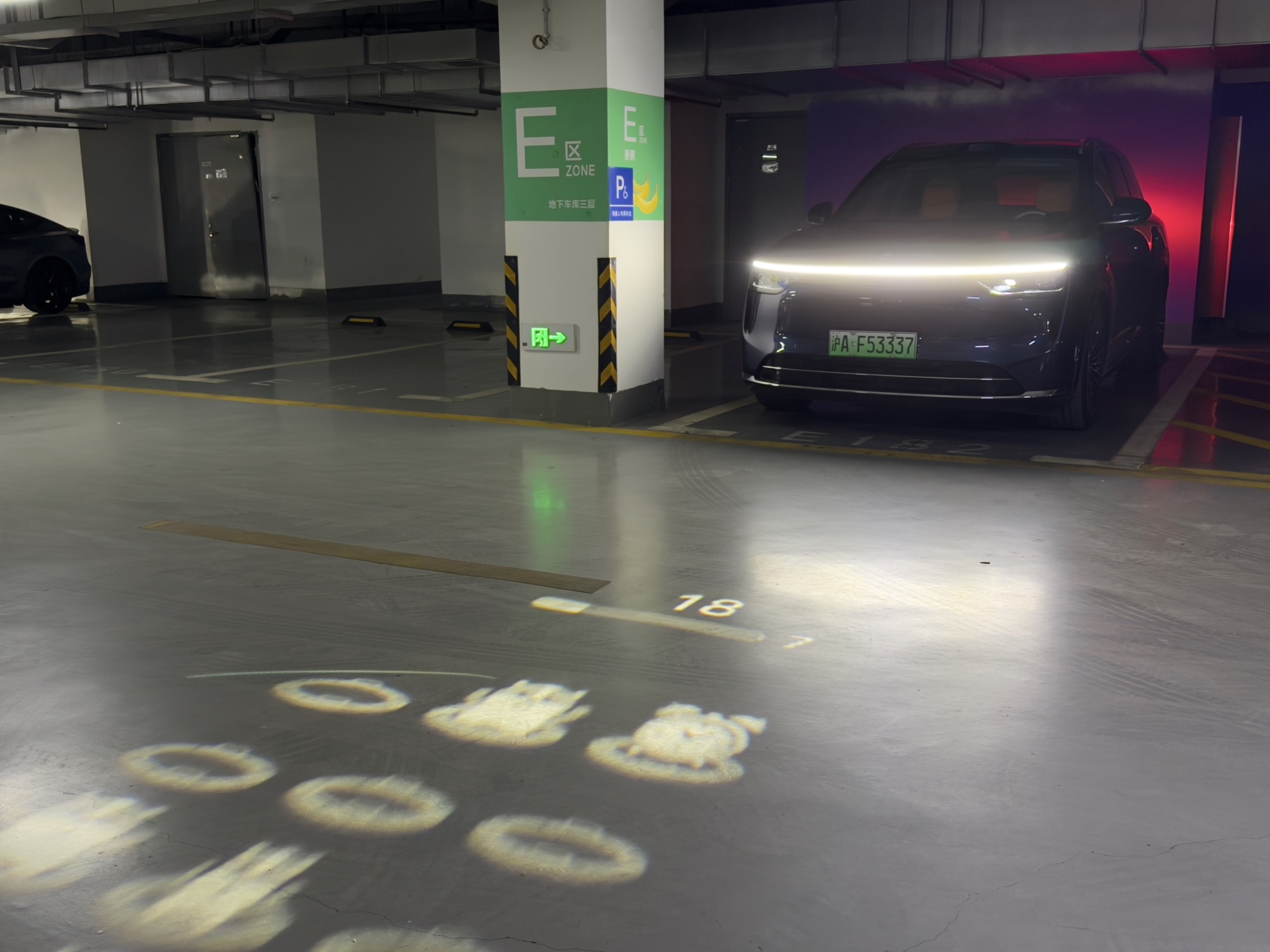
For families with children, projection games are sure to be a hit. If you’re camping, setting up a screen in front of the car for projection is equally enriching.
Inside the AITO M8, you’ll discover more family-oriented travel features.
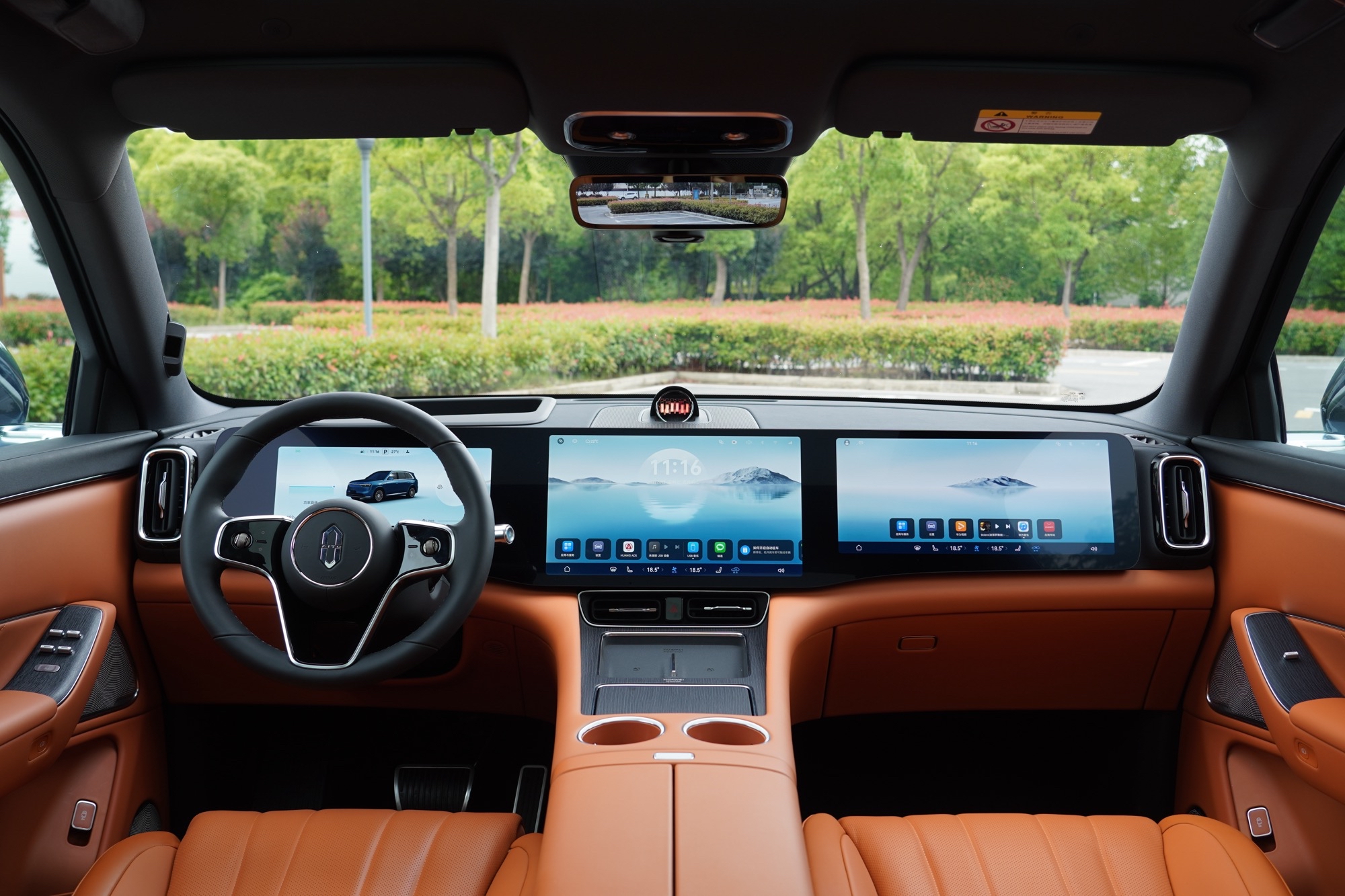 In a vehicle that emphasizes intelligence, the screen becomes the gateway to most of its functions. In terms of hardware, the AITO M8 Extended Range Ultra model is equipped with three screens in the front row (12.3-inch instrument, 15.6-inch central control, and 16-inch passenger entertainment) along with Huawei’s immersive head-up display system (XHUD), and a 32-inch projection screen in the rear to provide a consistent experience for all passengers.
In a vehicle that emphasizes intelligence, the screen becomes the gateway to most of its functions. In terms of hardware, the AITO M8 Extended Range Ultra model is equipped with three screens in the front row (12.3-inch instrument, 15.6-inch central control, and 16-inch passenger entertainment) along with Huawei’s immersive head-up display system (XHUD), and a 32-inch projection screen in the rear to provide a consistent experience for all passengers.
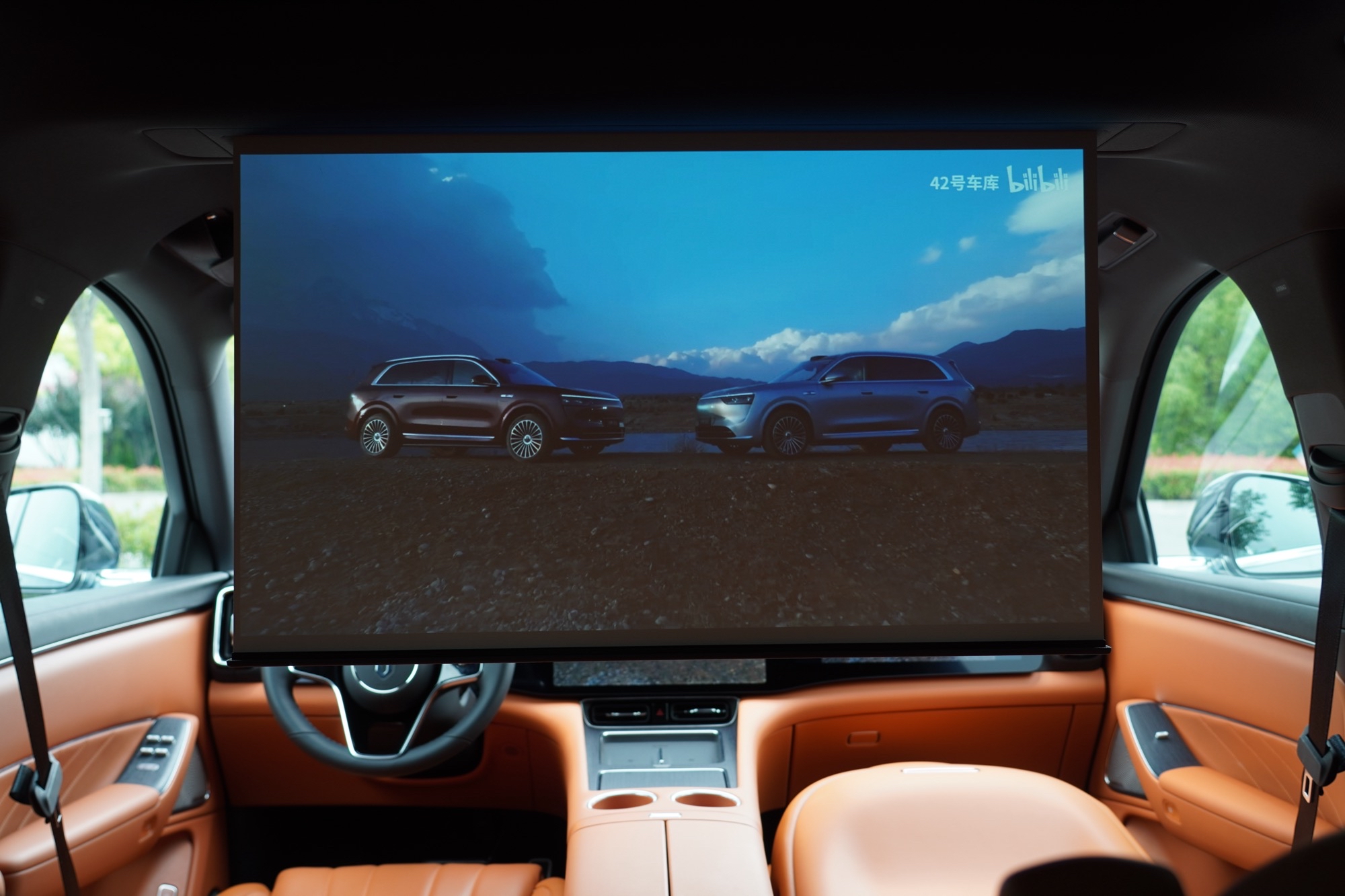
Some might argue that while the projection size is indeed large, is the quality really good? AITO M8’s projection system is already in its second generation, offering native 1080P quality, 600 lm brightness, and support for the DCI-P3 color gamut. Even in bright afternoons, if the roof and side window shades are closed, the rear projection quality remains exceptional.
With excellent hardware, how about the software and services?
During family trips, audio and video entertainment services are the most important user needs. If not well executed, users might resort to abandoning the large screen for content on a small phone, leading to a less satisfactory experience.
The AITO M8’s Huawei App Store offers users a rich application ecosystem, featuring Huawei Video and leading domestic video platforms like iQiYi, Bilibili, Mango TV, Tencent Video, Youku, etc., all with good app compatibility.
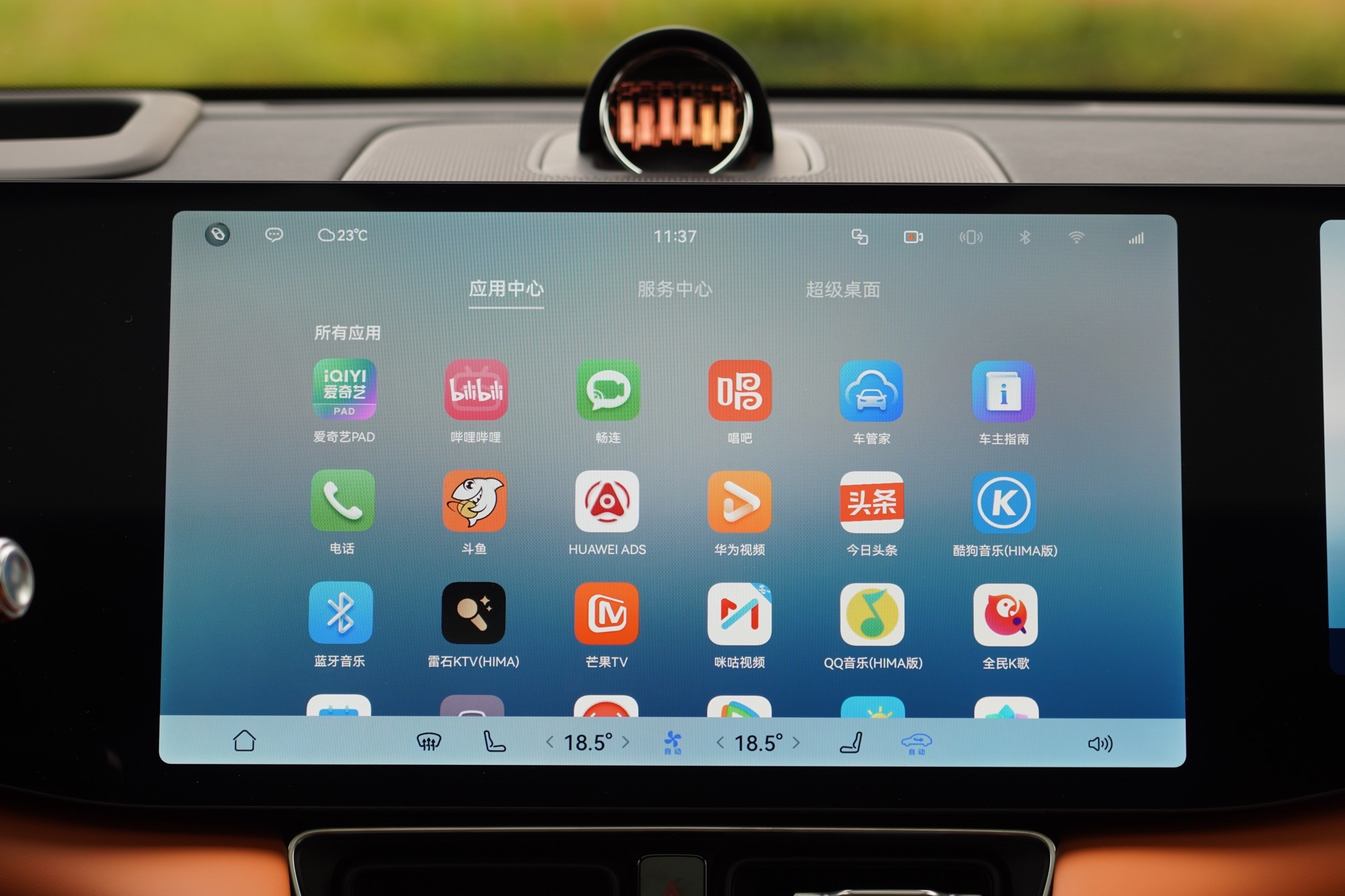
But this has already become the basic operation for smart cars by 2025. More advanced capabilities involve multi-screen interaction. On the AITO M8, multi-screen control is achievable.
For example, if the passenger in the front finds the video interesting, they can swipe up to project it onto the car lights, swipe left to play it on the central control screen, or swipe down to project it in the rear.
The central control screen can also directly manage the rear projection screen to help rear passengers find suitable entertainment content. Of course, it’s possible for everyone in the car to watch the same video simply by dragging or using voice control, which is very easy to use.

Speaking of voice, it’s worth noting that Xiaoyi has integrated Huawei’s Pangu large model and DeepSeek. In our experience, the AITO M8’s Xiaoyi has matured in answering car-related questions, accurately generating responses regarding dashboard warning lights or hidden vehicle functions. If your child happens to be full of “Whys,” Xiaoyi can generate accurate answers as well.
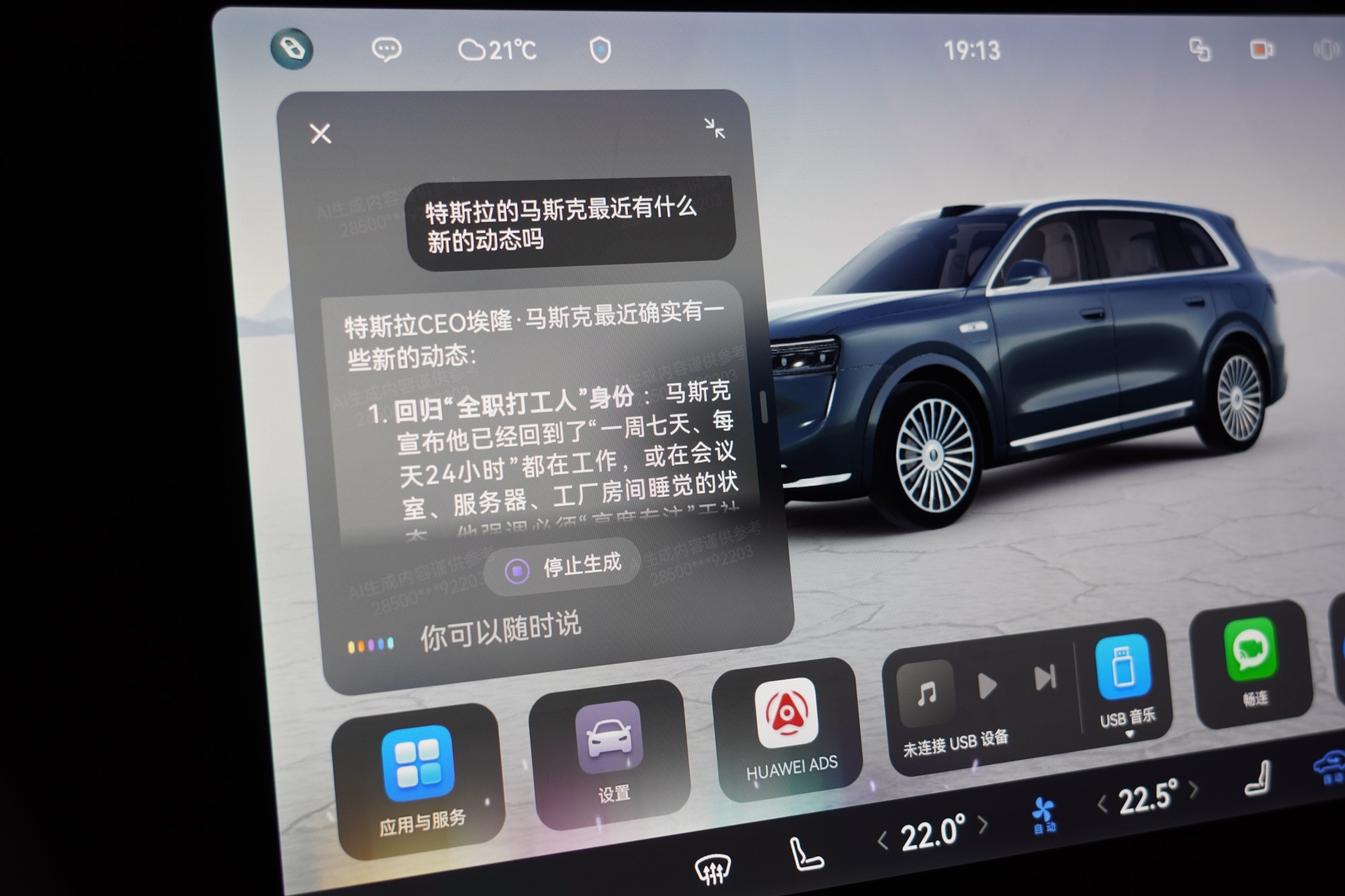 In addition, if you find some apps missing in the car’s system, you can directly connect a Huawei phone using Super Desktop, allowing the apps on your phone to be opened within the car’s system.
In addition, if you find some apps missing in the car’s system, you can directly connect a Huawei phone using Super Desktop, allowing the apps on your phone to be opened within the car’s system.
AITO M8 puts significant effort into seating and space layout for various driving scenarios.
For the six-seater version we experienced, AITO M8 offers combinations of 3, 4, 5, and 6 seats. When the three rows are folded down, it creates a classic four-seat layout that maximizes the second-row space. The front passenger seat can be completely folded, providing a more open space for the rear passengers, thereby transforming into a more comfortable three-seat mode.
If camping, the front seats of the six-seater version can recline backward, connecting with the second-row seats to form two sofa beds, with a length of up to 1,950 mm. If the third row is folded forward, the entire trunk length extends to 1,437 mm.

After an in-depth experience, we found that the AITO M8’s interior is richly equipped with smart features, which are not just a simple accumulation of hardware and software. Each function is designed with family travel in mind, considering the details for your loved ones.
In fact, the factory-installed HarmonyOS 4.3 on the AITO M8 includes many new features, such as the 1/4 suspension rear-row projection, playful and cute dynamic wallpapers, and the situational light language of the taillights. The combination of these elements showcases that the AITO M8 is a luxurious SUV suitable for family outings.
How to Make Your Travel Safer?
Today, safety has become a basic requirement for car buyers, especially for family car users. AITO M8 offers a comprehensive solution of active safety, passive safety, and assisted driving.
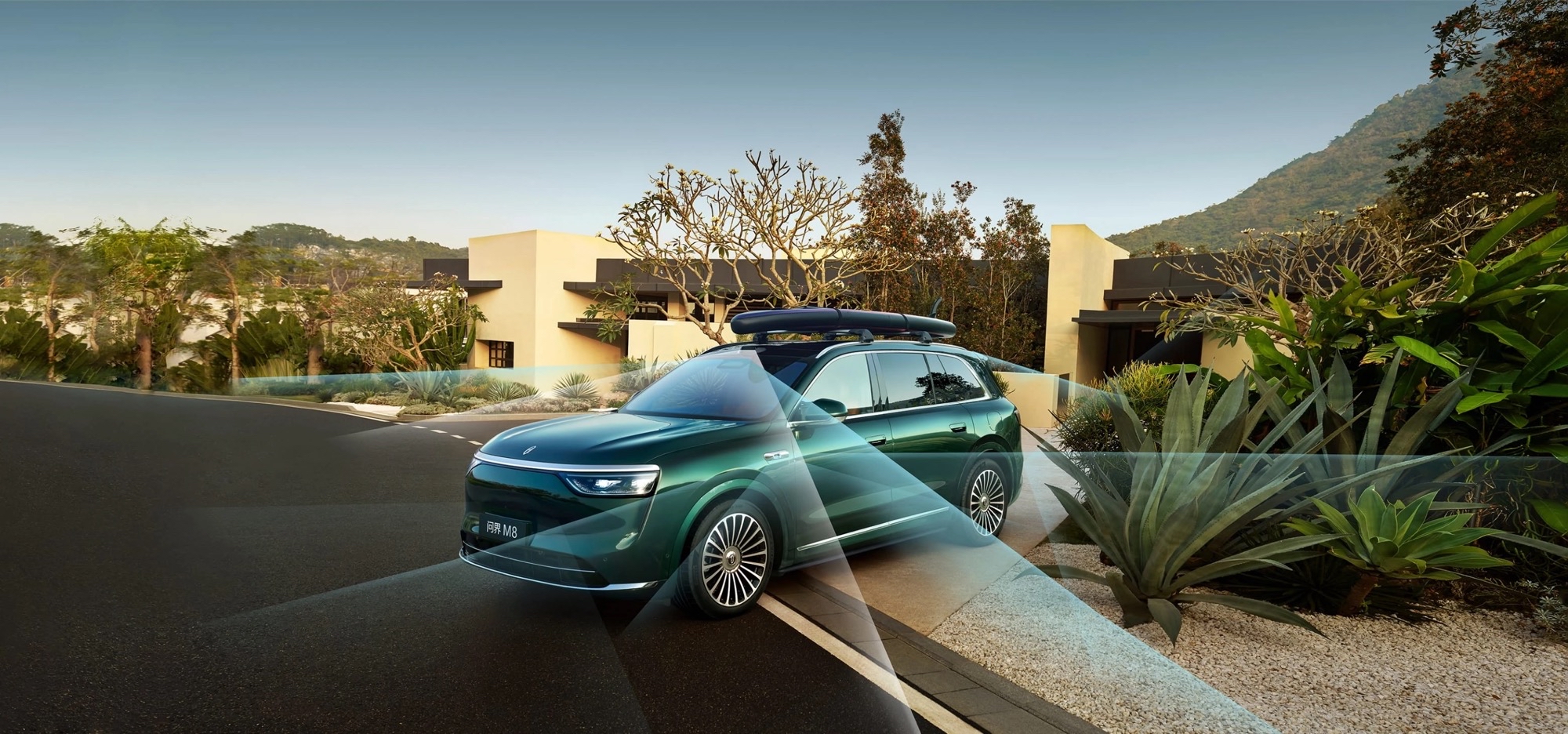
The AITO M8 features a total of 30 sensors on the exterior, including:
- 1 192-line LiDAR
- 1 rear-facing high-precision solid-state LiDAR
- 5 4D millimeter-wave radars
- 3 high-precision cameras
- 4 surround-view cameras
- 12 ultrasonic radars
Notably, compared to the previously launched HarmonyOS models, the AITO M8 has two differences in sensors.
The first difference is the 4D millimeter-wave radar, and the second is a rear-facing solid-state LiDAR on the AITO M8’s rear.
Based on this sensing system, AITO M8 comes factory-installed with ADS 3.3.1. Functionally, this version supports vehicle-to-vehicle assisted driving and passing through ETC toll gates, allowing cross-city car installations. In overall experience, AITO M8’s assisted driving does not significantly differ from other models under the HarmonyOS brand, all being top-tier. Perhaps the sensor configuration differences may be better highlighted in extreme conditions.If anyone is interested in seeing content about AITO M8’s assisted driving, we can make a separate video explanation.
For everyday vehicle use, AITO M8’s comprehensive active safety features provide enhanced protection for your and your family’s travel safety.
Firstly, concerning forward active safety, AITO M8’s AEB function covers speeds from 4 – 150 km/h. It can recognize objects that mostly include road traffic participants, such as pedestrians, vehicles, and two-wheelers, regardless if the traffic participant is stationary, dynamic, moving against traffic, or crossing diagonally. AITO M8’s integration of perception system and chassis capability allows the AEB system to trigger early on low-adhesion roads, achieving comfortable braking.
In terms of lateral active safety, AITO M8 is equipped with ESA (Emergency Steering Assist) and eAES (Enhanced Autonomous Emergency Steering) functions, covering speeds from 30 – 130 km/h. ESA function is standard, while eAES requires purchasing an advanced driving assistance package, bundled with functions like urban driving assistance.
When an obstacle appears in front of the vehicle, the Emergency Steering Assist system can intervene with steering to help the driver avoid collision. The Enhanced Autonomous Emergency Steering goes a step further by not only helping with steering intervention but also assisting the driver in emergency braking to reduce collision risk.
AITO M8 also features rearward active safety capabilities, covering speeds between 1 – 60 km/h. In low-speed reversing scenarios, if a child or vehicle is crossing behind, or a general obstacle appears, the GAEB function activates to help stop the vehicle.
AITO M8 has a considerate setup of preventing unintended acceleration collision. If the vehicle determines that the user is mistakenly pressing the accelerator, it will first prompt “Please lift your foot.” If the driver continues to press the accelerator, the vehicle will limit torque output; followed by AEB intervention when a collision risk is detected.
Of course, the auxiliary driving and active safety capabilities of the vehicle do not imply that the owner can rely on the system. Safe driving is still required for daily vehicle use.
In terms of passive safety, AITO M8 incorporates 12 areas of 2,000 MPa hot-formed steel. Additionally, the 9800-ton integrally cast rear floor can protect the safety of passengers across three rows. Furthermore, AITO M8 has a total of 9 airbags, with the 2.8m long side curtain airbag capable of covering the third-row space.
Moreover, the recent discussions on door handle safety have been quite heated. In this regard, AITO M8 employs a semi-hidden design. For regular use, pressing the switch inside the door handle opens the door, while in emergencies, a strong outward pull will work, functioning as a mechanical door handle. Additionally, the semi-hidden design reduces drag and improves aesthetics. This seems to be a relatively perfect solution for hidden door handles. What are your thoughts on this issue?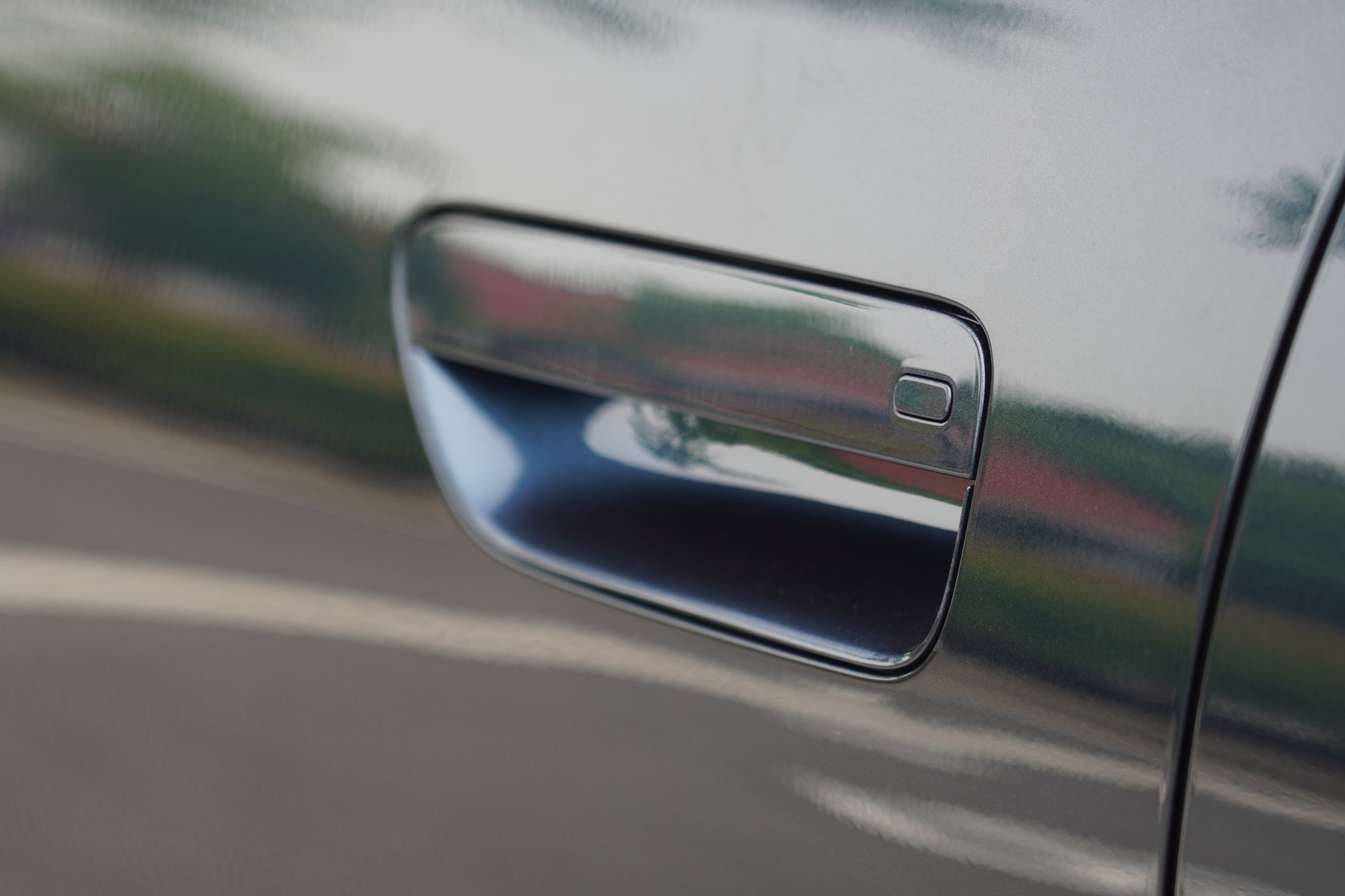
During the launch of the AITO M8 on April 16th this year, SERES President He Liyang once again emphasized safety, stating that “safety is the greatest luxury,” which perfectly aligns with the core needs of family users. The AITO M8 is equipped with 30 sensors throughout the vehicle, with active and passive safety features that may not always be visible or tangible, but these features truly protect the family’s safety, which is the essence of luxury.
In Conclusion
From a product perspective, covering everything from the basics like range, energy consumption, space, and chassis, to more advanced features like intelligence and assisted driving, the AITO M8 demonstrates exceptional product strength. Additionally, after purchasing a vehicle, AITO offers a comprehensive service system covering all usage scenarios, including lifetime warranty on paintwork, 24/7 all-scenario rescue, remote vehicle diagnostics, and more, providing higher quality service to car owners.
It seems genuinely challenging to find a significant weakness in the AITO M8, which presents a daunting fact for other competing models.
Currently, the competition in the 400,000-level new energy SUV market is fiercely intense, and this “battle of the titans” scenario is set to continue. After an in-depth experience with the AITO M8, it becomes clear that SERES and the AITO series can stand out in the new energy vehicle market, thanks in no small part to Huawei’s deep involvement, as well as SERES’s active embrace of changes in new energy and intelligent technology.
This article is a translation by AI of a Chinese report from 42HOW. If you have any questions about it, please email bd@42how.com.
